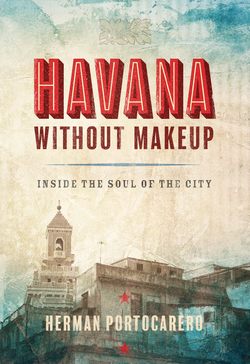Читать книгу Havana without Makeup - Herman Portocarero - Страница 18
На сайте Литреса книга снята с продажи.
Оглавление11.ASIA DE CUBA
Before I came to live in Havana for the first time in 1995, in New York I had often wondered about the origin of such restaurants as Asia de Cuba and Caribbean greasy spoons advertising comidas chinas y criollas. These questions led me to decipher an almost forgotten chapter of world history.
In Havana, when you pass the Capitolio, you reach the Parque de la Fraternidad with its white marble statue of a supposedly native Cuban girl symbolizing the city and its remote origins. Incidentally, this is also a nightly hangout for transvestites, as tragicomically illustrated in the 2014 film Fátima o El Parque de la Fraternidad. To the right you now face the monumental gate to the Barrio Chino, Havana’s Chinatown. The gate is a late addition, a gift from the People’s Republic to what is officially a brotherly communist nation. We’ll explore later to what extent that is still the case.
Barrio Chino: gate to forgotten history – and awful food
The Chinese presence in Cuba began after the Spanish conquistadors reached the Pacific via Cuba and Mexico. The Spanish extended their colonial empire all the way to the Philippines in the 1540s. Mainland China was mostly forbidden territory, but the Chinese state had a great desire for the silver from Peru and Mexico. This expanded trade over new routes and vast distances, of which Havana became the focal point.
Goods traded for Spanish silver reached Mexico in the so-called galeones de Acapulco from Manila to Mexico’s west coast, and were then transported overland to Veracruz, and from there on to Havana, to become part of the cargoes sailing to Cádiz.
In colonial times, the term pacotilla china became a saying in Havana, referring to the cheap or not-so-cheap chinaware and other exotica and bibelots left behind or “fallen off the ship” (as port thievery was also known in the Antwerp of my childhood). These remnants of early trans-Pacific trade are still to be found in great quantities among the inventories of the Havana mansions frozen in time since the Revolution. They may also be discreetly on sale from unlicensed antique dealers, although the best pieces, as part of a jealously monitored patrimonio nacional, are not supposed to leave the country.
The Chinese presence in Havana also grew with trade. This Asian population further expanded after the abolition of slavery, when Asian indentured laborers arrived in considerable numbers. At the outset, those workers were hardly better off than slaves had been, but many worked themselves up as traders and merchants, and the Barrio Chino grew and prospered.
There may have been a new influx of Chinese migrants after Mao’s triumph in China in 1949. Despite earlier restrictions on immigration in Cuba, as elsewhere, by then official Cuba welcomed any immigration as long as it counterbalanced the fear of a black republic. When those recent Chinese immigrants, who had fled communism, saw themselves faced only ten years later with the Cuban Revolution, many emigrated yet again to New Orleans, San Francisco, or New York. Deprived of commerce and the upward social mobility it had brought, Havana’s Barrio Chino began to fossilize.
The present-day barrio is often criticized for being an artificially maintained tourist trap, with the obvious tricks of some calligraphy, dragons, and red lanterns. That’s partly true, yet as late as the 1990s there was a Chinese-language newspaper and at least one authentic Chinese herbal pharmacy still operating. Now the barrio is mostly a concentration of Chinese restaurants of doubtful cuisine and even more questionable hygiene. But lurking under the artificially maintained chinoiserie there are a few clubs and traditional cantinas where the last authentic inhabitants, stubborn men at least in their eighties, maintain relics and traditions.
